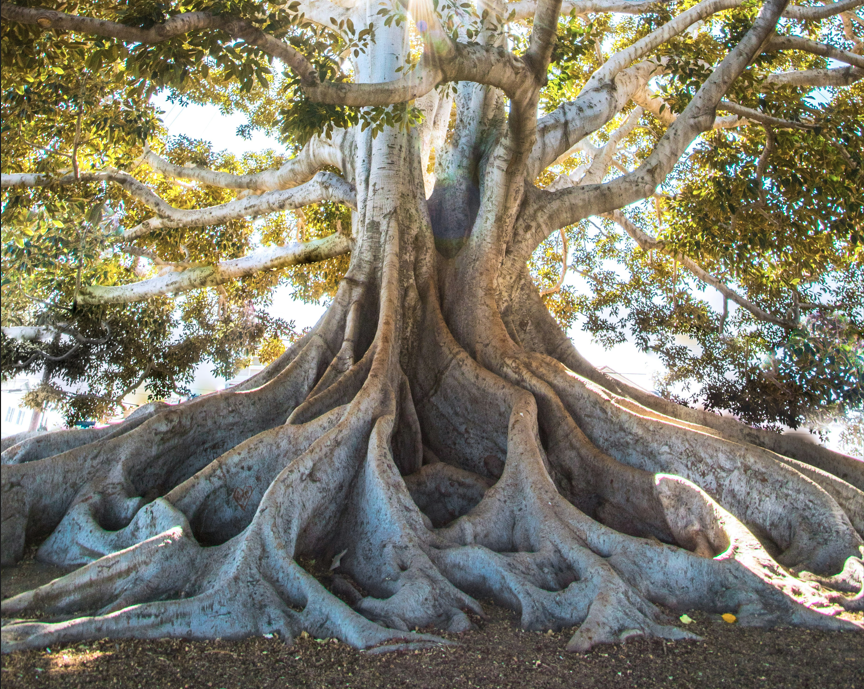Sermon Summary
The Genealogy of the Dead and the Genealogy of the Living
Those who follow Jesus will receive the blessing of eternal life. Until Jesus returns, we only need to follow. But when he returns, we will be transfigured into eternal life without seeing death. We should not seek for transfiguration simply because we are kiasi (anxious). All of us are born into sin, but Jesus came to rescue us from the unending cycle of sin and death. Those who are born again are lifted from death to life. They are spiritually distinguished and set apart by God. They are plucked out of the genealogy of the dead and grafted onto the genealogy of the living. Even though they live in the world, those who are plucked out of the genealogy of dead are the holy ones. This is the separation which distinguishes the people of God who are on the path to eternal life.
The differences in the genealogies
1 Timothy. 1:4
‘or to devote themselves to myths and endless genealogies, which promote speculations rather than the stewardship from God that is by faith.’
What does this mean? The genealogies we study in the History of Redemption series are not endless. There is a beginning and there is an end. The main tool for studying the administration of God is through the genealogies. The difference is that the genealogies we study are not endless, nor are they myths.
Titus 3:9
‘But avoid foolish controversies, genealogies, dissensions, and quarrels about the law, for they are unprofitable and worthless.’
The Greek word for genealogies here is geneologia. What about the genealogies we study? Genesis 5:1 in the Septuagint is geneseos. This word is also found in Matthew 1:1, where it records the geneseos of Jesus Christ. This genealogy is a pathway that shows us how the image and likeness of God travels, from Adam to Abraham, and from Abraham to Jesus. These genealogies show us the path through which Jesus Christ came into this world. The focus is not human genealogy, but how life came to this world of death. Jesus came in this genealogy. It is life which came into the genealogy of the dead, not the other way round. Without Jesus, any genealogy is a genealogy of the dead.
Jesus’ purpose was to turn the genealogy of death into a genealogy of life. Although Jesus came into the human genealogy, he did not stay within it. Through the cross, he came out of it and into the heavenly genealogy. He paved the way for us to enter into the genealogy of heaven. Jesus granted us this path. The Bible gives us hints of this in the lives of Joseph and Elijah. Elijah, unlike the other prophets, is not introduced in the bible along with his father’s name. Jewish culture usually proved the credentials and legitimacy of important people through their father’s names and even to the generations prior. Elijah had no such introduction. Jacob took Joseph out of the genealogy and replaced him with Ephraim and Manasseh. This hints at Joseph being taken out of his father’s genealogy for some reason. May we receive the blessing that through the cross of Christ, we will be taken out of the genealogy of the dead and grafted onto the genealogy of the living. Through Jesus, we are grafted onto the genealogy of the living as children of Abraham.
Characteristics of the genealogy of the dead
• It is a list of people who are racing towards death.
• They believe that death is the end of all life.
• It shows us the flow, direction, and consequences of sin.
• It shows us the result of eating from the tree of the knowledge of good and evil.
The genealogy of the dead is an accumulation of sins from Adam down to the next generations. Each generation sins more and more, and it brings the world into a downward spiral of chaos. Adam did not have a genealogy before he fell, but his genealogy began only when sin came in. Yet God used that genealogy to show the path through which God’s covenant would be fulfilled.
The genealogy of the dead began with Adam’s eating of the tree. Sin ushered in death.
Characteristics of the genealogy of the living
• It is a genealogy which leads to eternal life.
• It shows us the flow, direction, and fruit of God’s covenant.
• It leads to the tree of life.
The actual record of the genealogy of the living is the book of life. It is a book which records those who have received the faith, have become children of God, and have become citizens of the Kingdom of Heaven. In the genealogy of the living, dead is not the end. We need an exodus out of the genealogy of the dead and into the genealogy of the living.
Jesus, the tree of life, came to this world in the flesh for the purpose of redeeming us.
Our purpose and goal are to eat of the tree of life once more, and the genealogy of the living shows us how to do so. We need to leave behind the sinful culture of this world and be reborn into the genealogy of the living.
What is the genealogy of the living?
The Bible describes the genealogy of the living as the order of Melchizedek. The Bible talks about life coming out of death. Jesus was born into the genealogy of the dead, but through the cross, He lifts it up and transforms it into a heavenly genealogy of life. Jesus did not die in that genealogy, and so transforms it.
The concept is coming into death but giving it life. Letting life come out of death. Where do we see this in the Bible? Aaron’s budded staff represents life coming out of death. We also see that from a stump of Jesse comes out a strong mighty tree (Isaiah 11:1-10). Jesse is David’s father, and so this stump represents a royal authority which seemed dead but came to new life. The budded staff of Aaron represents the priestly authority. This stump of Jesse represents the kingly authority. Only Jesus can be both a king and a priest. No one else was allowed to be a king and a priest. King Saul tried to do so, and he was stripped of his title. But there is one more who fits the description of both a king and priest: Melchizedek.
Whether Melchizedek is a theophany, christophany, or pre-incarnate christophany, or just a type of Christ, the word ‘Melchizedek’ means ‘King of Righteousness’, and he is described as the king of peace (Hebrews 7:2). He embodies the completion and fulfilment of God’s covenant.
The author of Hebrews also clearly recognises Christ in Melchizedek (Hebrews 5-7). There are very few descriptions of Melchizedek, but they are so significant that we cannot overlook them. Melchizedek has no record, no race, without genealogy, without father or mother, without beginning or end. This tells us that Melchizedek is free from the cycle of life and death. This is a perfect example of one who is liberated from the genealogy of the dead. Furthermore, we need to think about why God put this character, Melchizedek, alongside Abraham and David in the Epistle to the Hebrews. The author of Hebrews clearly places Melchizedek above Abraham and the Levites by stating that the latter tithed to the former. Melchizedek blesses both Abraham and David. Melchizedek is also described as one like the son of God. Finally, Jesus comes into the order of Melchizedek. It seems like Melchizedek takes precedence before even Jesus Christ. We must remember that God is Triune, and Melchizedek is not the fourth person in the God-head. But perhaps Melchizedek is the pre-incarnate Christ, the theophanic/christophanic manifestations of God, or maybe just a type, a foreshadowing of Jesus Christ. Whatever it is, we must be clear that God does not have Melchizedek and Jesus as two Sons. Melchizedek is described as the King of Peace. All this points to the completion and fulfilment of God’s redemption work and of God’s covenant.
John 1 tells us that Jesus was there in the beginning. He was there in the very beginning, and through Him, all things were created. Jesus came at the first coming as the suffering Servant. But at His resurrection, His disciples did not recognize Him. They only realized who He was through His teachings. Jesus’ post-resurrection body was not limited by physical things. He could walk through doors and walls.
Melchizedek came to Abraham as the priest, the mediator, of El-Elyon, God the Creator. Melchizedek brought bread and wine to Abraham, the signs of the covenant. Melchizedek brought the covenant from God to Abraham. Jesus is the Lord who is coming. We see this clearly in Psalm 110:1.
Psalm 110:1
‘The LORD [YHWH] says to my Lord [Adonai]: “Sit at my right hand until I make your enemies your footstool.”‘
David is calling Jesus, ‘My Lord’. Later in Psalm 110:2-4, David recognizes Jesus Christ as One who comes in the order of Melchizedek. Melchizedek blessed Abraham, and Jesus is the one who came through Abraham’s lineage. Melchizedek becomes the blesser of Abraham and David, and that blessing is Jesus Christ the Messiah, the seed of Abraham, and the promised king from the line of David (2 Sam. 7:12-16).
May we also come into that order of Melchizedek through the cross of Jesus.
Hebrews 5:11-14 tells us that those who are in the order of Melchizedek eat and understand the solid food.
Hebrews 5:8 tells us the secret of being grafted onto the order of Melchizedek. The secret is obedience. The life of obedience is a life of bearing fruit. God sows in the earthly but reaps in the heavenly. Jesus came into the earthly, but the result was of the heavenly. We need to obey God with not only our minds but our bodies too. If we don’t understand God’s Word, then we especially need to obey. It is like a blind man who depends on his guide dog. The lives of Abraham, David, and Elijah are all characterized by obedience.
1 Samuel 15:22
‘Samuel said, “Has the LORD as much delight in burnt offerings and sacrifices As in obeying the voice of the LORD? Behold, to obey is better than sacrifice, And to heed than the fat of rams.’
Deuteronomy 5:33
‘You shall walk in all the way which the Lord your God has commanded you, that you may live and that it may be well with you, and that you may prolong your days in the land which you will possess.’
Obedience is the way for us to be grafted onto the order of Melchizedek.
Whereas the Gospel talk about how Jesus came down onto the earth, the Epistle to the Hebrews talks about how Jesus went up into the order of Melchizedek. God shows us both Solomon’s temple and Ezekiel’s temple. Jesus’ earthly and heavenly images are very much like these two temples. We are born into the genealogy of the dead, but may we not remain in that genealogy. May we be grafted onto the order of Melchizedek through a life of obedience. Obedience is about accepting, believing, and living in accordance to the Word of God.
AMEN





